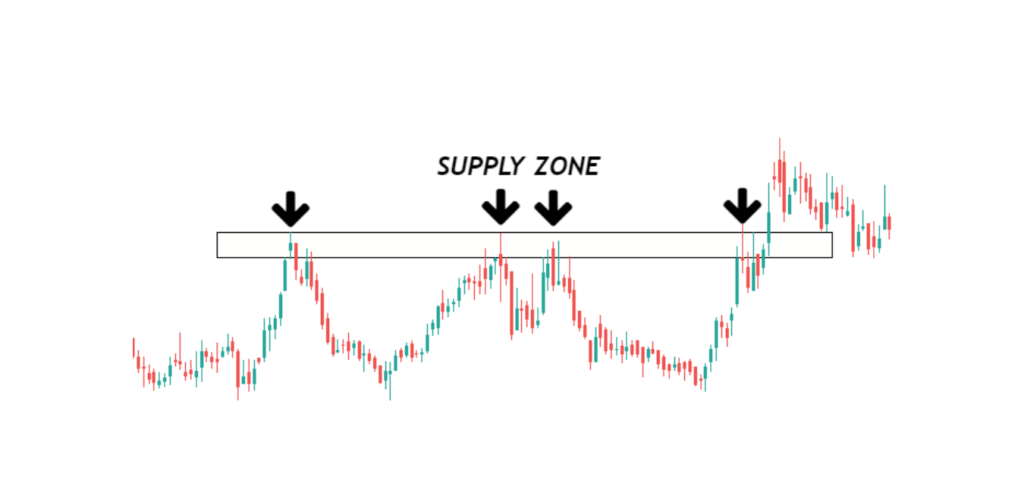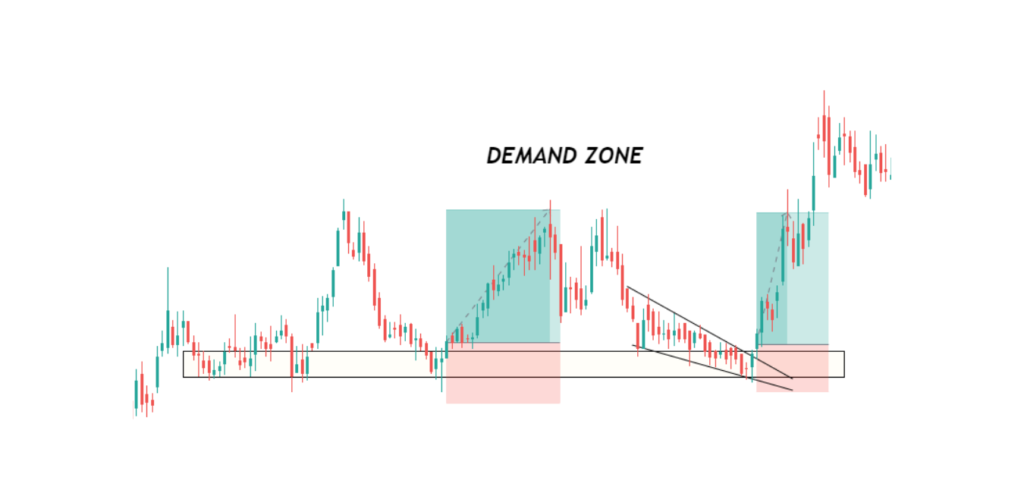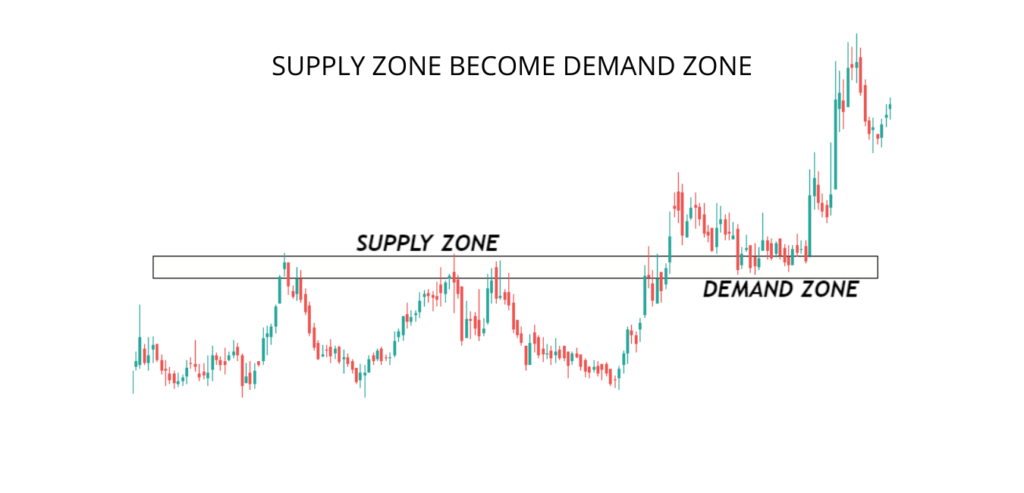Supply and demand zones are one of the popular method used in day trading. The zones are the periods of the sideways movement of the market. Supply and demand zone are some what similar to support and resistance, but not same.
Supply Zone
It is the price band, where traders are likely to sell the any security, like stock, index, commodity or any other security.

Demand Zone
Demand zones is the price band, where traders are likely to buy the any security, like stock, index, commodity or any other security.

So lets take an example to understand, how really price moves in between supply and demand zones.
Everybody knows about diamonds and their prices. So why diamonds are so expensive?
The answer is, their supply is low or you can say, their demand is high. If something is rarely available and their demand is high, their price will be high.
If the same diamonds are made available everywhere, their price will decrease significantly. Because their supply will be high and demand will be low.
Supply | Demand | Price |
Low | High | High |
High | Low | Low |
Now, I think you have an idea about how supply and demand zones are works.
How to draw supply and demand zones.
First understand this, supply and demand zones best works in sideways market and you should use them is sideways market only. Supply zones are present above the price and demand zones are present below price.
Supply zone
To draw supply zone, first you have to look points on the chart where price has reacted previously. But points should be above the price of the security.
Then, you have to connect those point together. It is better to have maximum price points connecting together.
See an image below.

Demand zone
Same as we did for supply zone. The only difference is that, you connect points which are below the market price.
See and image below.

Now, you will be able to draw supply and demand zones easily. But how to trade them?
How to trade supply and demand zones?
Best way to trade supply and demand zone are by combining them with candles or chart patterns.
Supply zones
As you know, at supply zones most traders look for selling. When you are trading supply zones, look for bearish revers patterns like, shooting star, doji candles and bearish engulfing candles. You can also look for any reversal pattern such as, wedge, head and shoulder.
See an image below

Demand zones
At demand zones look for bullish reversal patterns like hammer, doji candles and bullish engulfing candles. And patterns are wedges, reverse head and shoulder.
See an image below

Exchange of zones
There comes a time, when supply zone becomes demand zone and demand zone becomes supply zone.
Supply zone become demand zone
When supply zone get broken, it becomes demand zone.
See the image below, observe it from left to right.

Demand zone become supply zone
When demand zone gets broken, it becomes supply zone.
See the image below, observe it from left to right.

Final Thoughts
Learning about the supply zone and demand zones can be the great for trading. But you need to remember one thing that is, supply and demand zones best works in sideways market. So don’t try to draw them in trending market.
Read previous article about trend lines.
